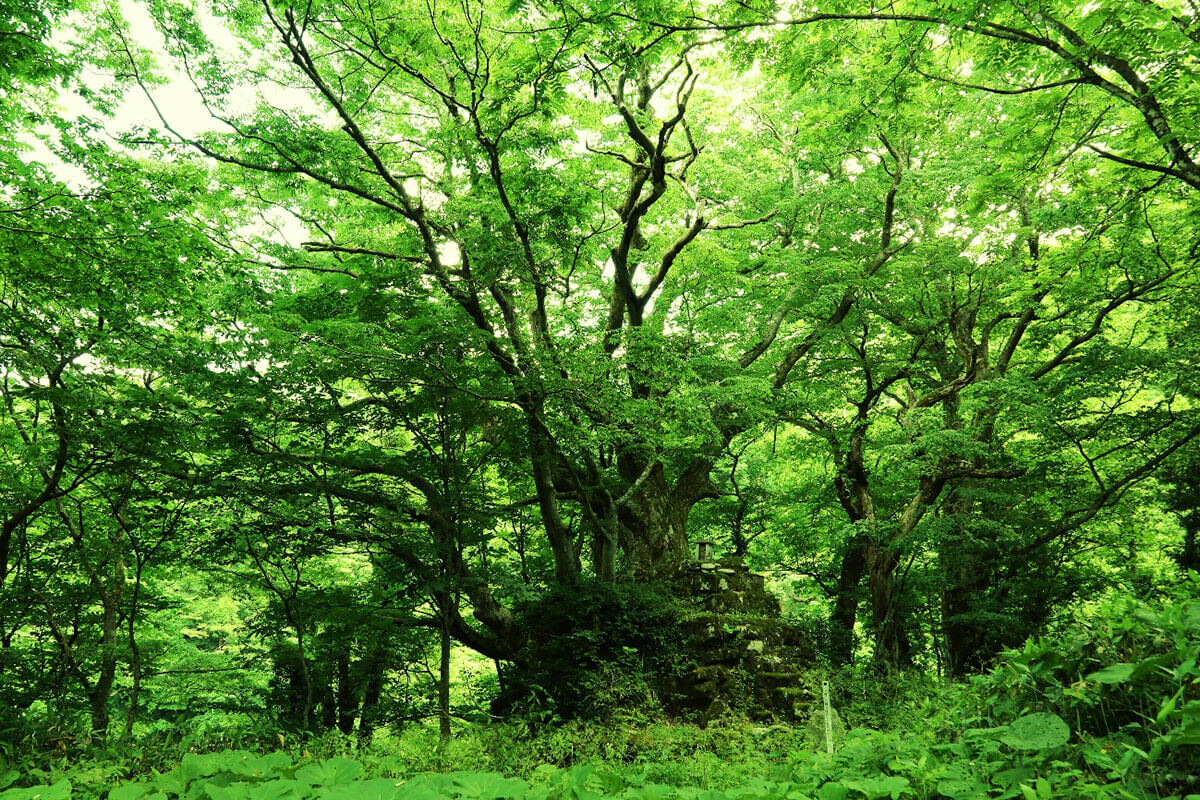最終更新日:2022年4月28日

A distinctively shaped and remarkably large boulder sits just across the road from the Kojirakawa Checkpoint Site, down on the forested west bank of the Sho River. A giant zelkova (keyaki) tree grows on top of it, and stones have been arranged in piles all around and on top of the boulder. The piles of stones are grave markers; from ancient times until the early 1970s, this site functioned as the Kojirakawa village’s communal cemetery. Many of the graves are unnamed, but the one highest up on the rock is known to belong to a government official who was in charge of the Kojirakawa checkpoint during the Edo period (1603?1867).
Tombs with large headstones were traditionally uncommon in the Shirakawa area, unlike in most other parts of Japan. Shirakawa’s burial customs were influenced by a combination of ancient nature worship and early Jodo Shinshu (True Pure Land) Buddhism, in which ancestor worship was considered unnecessary and salvation through faith in the Amida Buddha, who leads believers into paradise (the Pure Land), was emphasized instead. The Kojirakawa site is thought to have been chosen as a cemetery mainly because of the majestic zelkova tree, which was believed to be a dwelling of divine spirits. Its sprawling crown casts its shadow over the riverbank, where cremations also took place.
この英文解説は、2021年観光庁「地域観光資源の多言語解説整備支援事業」により整備しています。
This English description is provided by the "Multilingual Commentary Project 2021" of Japan Tourism Agency.

Description
| Name |
Kojirakawa Burial Site and Zelkova Tree
|
| Type |
hirakawa Village Designated Natural Monument
Shirakawa Village Designated Historic Site
|
| Date |
Designated on April 1, 2014 |
* Please note that the above information is provided for reference. There may be cases where it differs from current information.